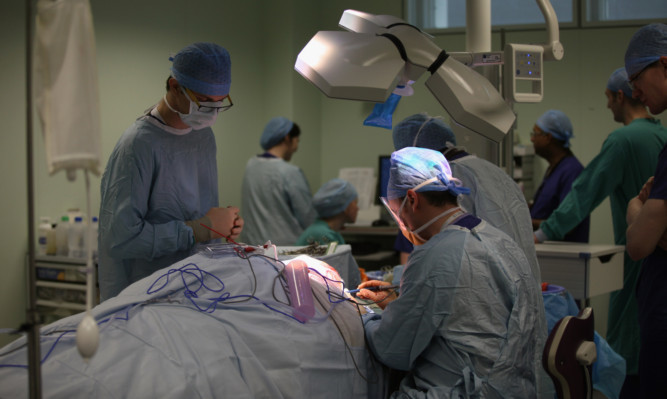A SERIES of surgical blunders across Fife and Tayside over the last four years have cost hospital bosses more than £25 million.
The findings, revealed by documents obtained through the Freedom of Information Act, revealed that Scotland’s 14 NHS trusts have paid out more than £181m in clinical compensation claims since 2008/9; an average of £45m per year.
In Fife alone, the costs totalled £22,746,000, making it the third-worst offender, behind NHS Greater Glasgow and Clyde (NHSGCC) which coughed up £73,130,000 and NHS Lothian which shelled out £28,52,361.
In Tayside, the figure was far lower, at £2,571,970, although statistics show there was a significant increase in compensation payments in the region between 2010/11 and 2011/12 with costs rising from £568,795 to more than £1m.
Fife saw the biggest rise between 2008/9 and 2009/10, with payments rocketing from £4,965,000 to £9,107,000. They dropped to £3,313,000 the following year but rose again to £5,361,000 in 2011/12.
Most of the claims were made in relation to accusations of negligence or mistakes in diagnostics, obstetric, women’s reproductive tracts, falls and medication errors and some involved leaving surgical tools inside patients.
In some cases patients were given a one-off payment of more than £1m.
Elsewhere in Scotland, NHS Lothian paid out £140,315 in compensation to patients after tubing and a piece of a cannula, used in the removal or delivery of fluids, were left inside them after operations.
NHS Grampian also paid out £69,000 for up to five claims involving operation equipment left inside patients.
Although no compensation claims were submitted, hospital records in NHS Highland show surgeons left a swab, two needles, an abdominal swab and even a drill tip inside patients during operations.
Overall payouts increased from £28,999,464 in 2008/9 to £39,489,322 last year, hitting their peak in 2009/10 when the 14 trusts spent £56,822,986.
The Courier revealed last year that 19 objects had been left in Tayside patients after operations over a five-year period.
The 19 instruments included suture needle tips for closing wounds swabs and tips of guide wires and the incidents occurred in Ninewells Hospital, Dundee, Perth Royal Infirmary and Stracathro Hospital, near Brechin.
Margaret Watt, founder of the Scotland Patients’ Association, said: “It’s sad when you think of what the money the paid out in compensation claims could have been spent on.
“Mistakes are being made and many of them could be avoided if there was more money for training, staff and equipment.
“Plenty of patients who have sought advice from us have gone abroad or diagnosis and one gentleman went to America and paid for surgery on prostate cancer because he didn’t trust doctors here.
“Doctors are under a lot of stress, but that’s just part of it.
“Some are working ridiculous hours and you can’t expect them to perform at their best if they are overworked.
“We need to be asking ourselves why so many mistakes are being made.”
Matthew Sinclair, chief executive of the TaxPayers’ Alliance, said: “The NHS has to stamp out avoidable mistakes that put patients’ lives at risk and divert money away from the frontline.
“It’s wrong to suggest simply spending more cash on training is the answer to the NHS’s problems.
“Too much of the health budget is already spent on the back office and on bloated bureaucracy.
“Instead, hospital bosses need to ensure taxpayers’ money is reaching the frontline, training and support is improved while ensuring those culpable are held accountable for their actions.”
NHS Fife was asked to comment but had not done so at the time of going to press.
NHS Tayside was asked by The Courier to explain why there was a rise in cases of compensation payments between 2010/11 and 2011/12.
A spokeswoman said: “The reported settlements in 2011/12 and 2010/11 do not relate to incidents incurred in these two years, as clinical negligence cases often take several years to settle.
“The figures reported will contain a wide range of settlements and it would be wrong to draw any conclusions from the movement in numbers of cases or values between 2011/12 and 2010/11.”
cwilson@thecourier.co.uk
